The Netgear GS305P 63W PoE+ switch may seem confusing to some, and for good reason. Still, we think that this switch provides a better value as a 5-port unmanaged switch than its predecessor, the GS305P. If you think that was a typo, sadly, it is not. This is a review of the GS305Pv2 that is mostly simply labeled the GS305P just like its predecessor. There is a lot to unpack for such a simple device, so let us get to the review.
Netgear GS305P 63W Hardware Overview
The Netgear GS305P 63W is a very simple switch like the previous 55W version. There are five RJ45 1GbE ports on the front. Like other switches in this class, the uplink port is s non-PoE port and the remaining four ports share the power budget. Most of the marketing makes it clear that only four of the ports are PoE+ capable.
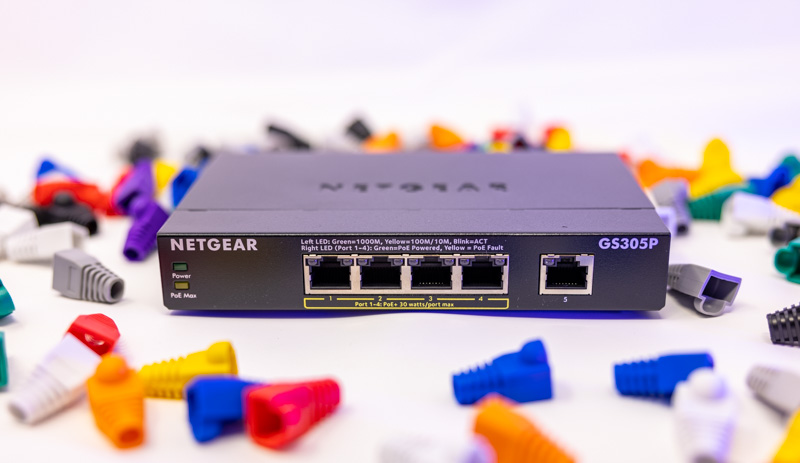
Although one sees the GS305P on the front of the chassis, there are two indications that this is the V2 version. First, the PoE+ budget per port is up to “30 watt/port max” now. Second, on the bottom of the unit, the model is the GS305Pv2.
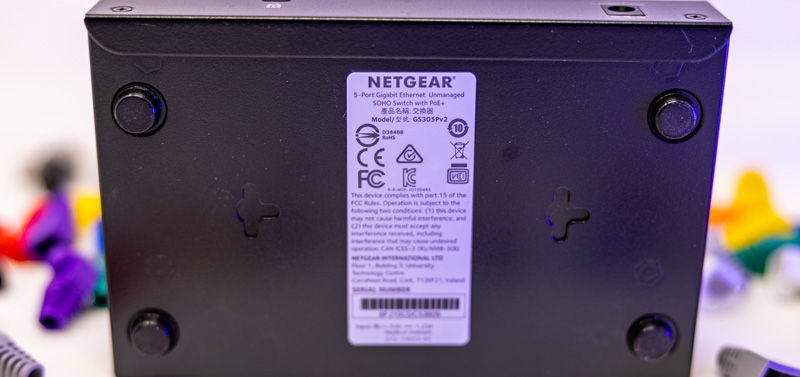
The PoE+ ports (30W) provide a maximum of about double the PoE 15.4W per port. If you want to learn more about the key differences of PoE vs PoE+ vs PoE++ switches we have a STH guide. We get an external 68W power supply for the unit which allows us to get the 63W available across the four ports. Most devices do not use 100% of a PoE power budget so some oversubscription is common in the industry. While the previous V1 version had port power to PSU power of around 1.12:1 this V2 version is about 1.90:1. That means that the oversubscription rate is much higher with this switch.
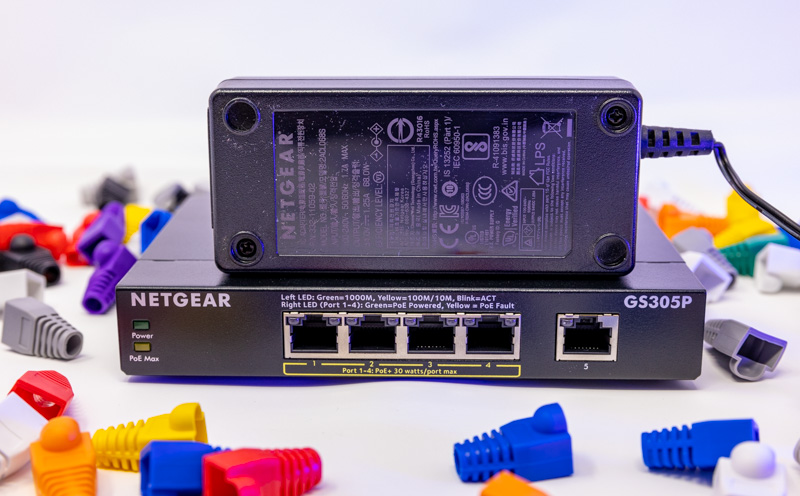
The rear of the unit is fairly simple except for a lock port and a power input port. The power input is 54V 1.25A.
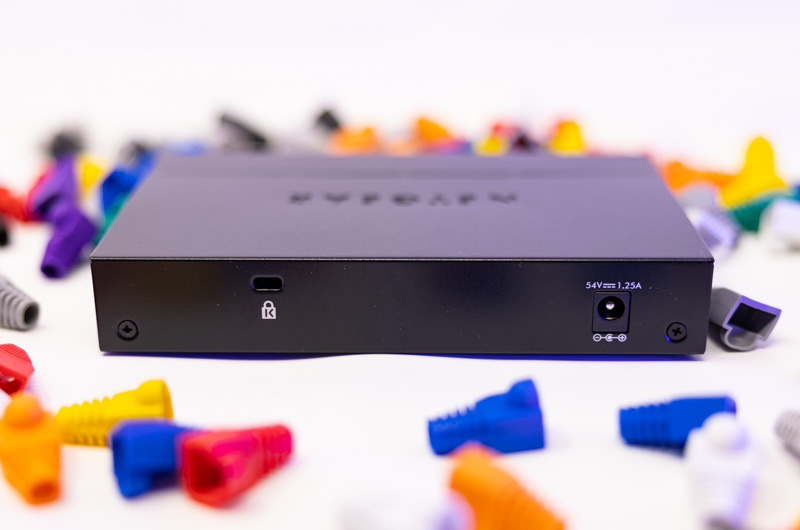
Inside the switch, we see a relatively simple PCB there are a few changes, most notably on the left of the PCB in this photo compared to the V1.
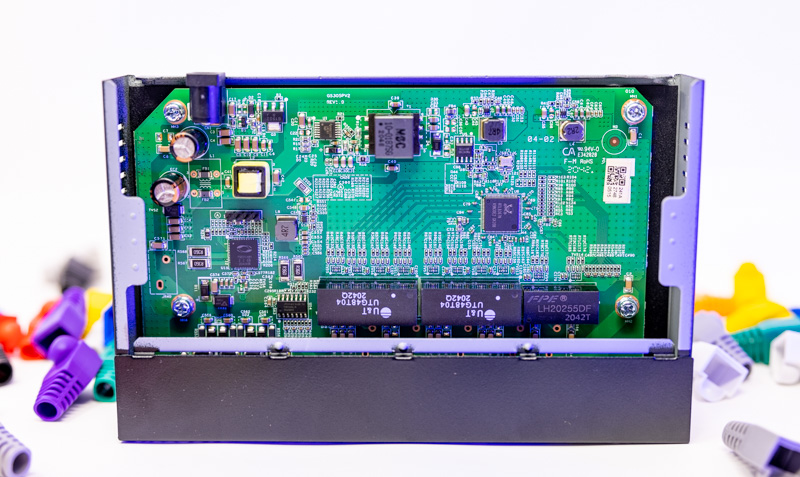
As with the V1 variant, the switch chip is again the Realtek RTL8367N that we can see here.
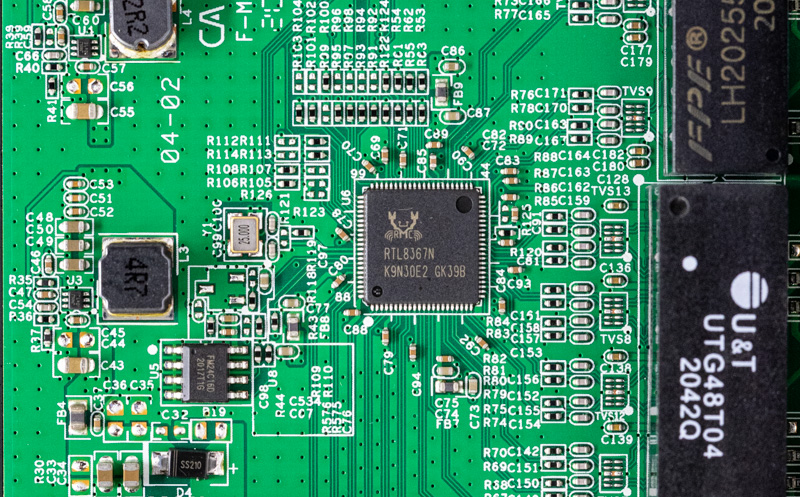
It seems as though there was no need to change the relatively inexpensive switch chip with the revision so this feels more like a PoE to PoE+ revision rather than a change in the data path. To some of our readers, the RTL8367N may seem familiar as it is used in the Ubiquiti N-SW NanoSwitch as well.
Next, we are going to take a look at performance, power consumption, and noise.

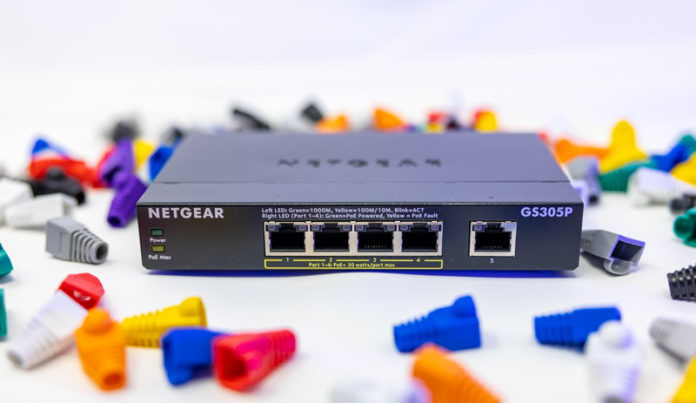



I don’t understand what those colorful jackets in the photo have to do with the switch.
You’re right the front of the switch should say V2